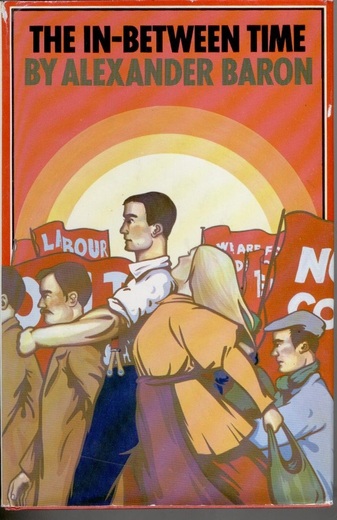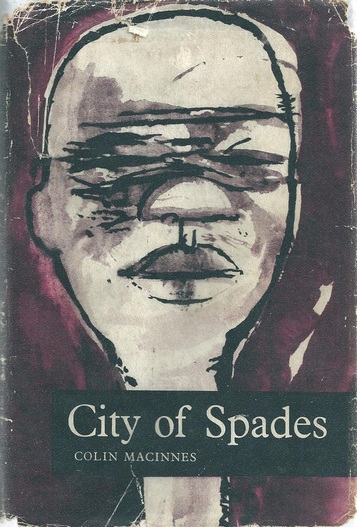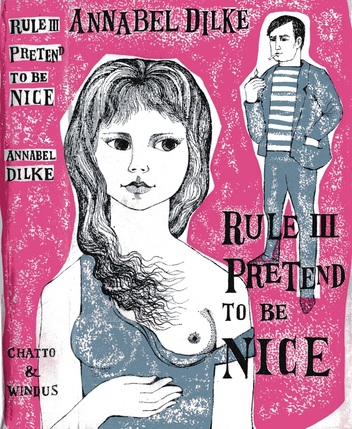| London Fictions |
|
- Home
-
To 1900
- Daniel Defoe: A Journal of the Plague Year
- Charles Dickens: Great Expectations
- Walter Besant: All Sorts and Conditions of Men
- Amy Levy: Reuben Sachs
- Margaret Harkness: Out of Work
- Margaret Harkness: In Darkest London
- Julia Frankau: A Babe in Bohemia
- George Gissing: The Nether World
- Arthur Conan Doyle: The Sign of Four
- George Gissing: New Grub Street
- H.W. Nevinson: Neighbours of Ours
- Arthur Morrison: A Child of the Jago
- William Pett Ridge: Mord Em'ly
- M.P. Shiel: The Yellow Danger
- Arthur Morrison: To London Town
-
1901-1930
- Joseph Conrad: The Secret Agent
- A. Neil Lyons: Arthur's
- Thomas Burke: Limehouse Nights
- Dorothy Richardson: The Tunnel
- Virginia Woolf: Jacob's Room
- Arnold Bennett: Riceyman Steps
- Aldous Huxley: Antic Hay
- Virginia Woolf: Mrs Dalloway
- Christopher Isherwood: All the Conspirators
- Lao She: Mr Ma and Son
- Patrick Hamilton: The Midnight Bell
- Jean Rhys: After Leaving Mr Mackenzie
- A.P. Herbert: The Water Gipsies
-
1931-1960
- Pamela Hansford Johnson: This Bed Thy Centre
- Simon Blumenfeld: Jew Boy
- John Sommerfield: May Day
- James Curtis: The Gilt Kid
- Virginia Woolf: The Years
- Samuel Beckett: Murphy
- Sajjad Zaheer: A Night in London
- John Sommerfield: Trouble in Porter Street
- Patrick Hamilton: Hangover Square
- Graham Greene: The Ministry of Fear
- Louis-Ferdinand Celine: Guignol's Band I & II
- Norman Collins: London Belongs to Me
- Elizabeth Bowen: The Heat of the Day
- George Orwell: Nineteen Eighty-Four
- Rose Macaulay: The World My Wilderness
- Graham Greene: The End of the Affair
- Alexander Baron: Rosie Hogarth
- Jack Lindsay: Rising Tide
- Iris Murdoch: Under the Net
- Samuel Selvon: The Lonely Londoners
- Gerald Kersh: Fowlers End
- Colin MacInnes: City of Spades
- Kevin FitzGerald: Trouble in West Two
- Colin MacInnes: Absolute Beginners
- E.R. Braithwaite: To Sir, with Love
- Lynne Reid Banks: The L-Shaped Room
- Colin MacInnes: Mr Love and Justice
- Colin Wilson: Ritual in the Dark
-
1961-1990
- Colin Wilson: Adrift in Soho
- Terry Taylor: Baron's Court, All Change
- Laura Del-Rivo: The Furnished Room
- Robert Poole: London E1
- Len Deighton: The Ipcress File
- Alexander Baron: The Lowlife
- B.S. Johnson: Albert Angelo
- Waguih Ghali: Beer in the Snooker Club
- Anthony Cronin: The Life of Riley
- Nell Dunn: Poor Cow
- Kamala Markandaya: The Nowhere Man
- Lionel Davidson: The Chelsea Murders
- Penelope Fitzgerald: Offshore
- J.M. O'Neill: Duffy is Dead
- Muriel Spark: A Far Cry from Kensington
- Martin Amis: London Fields
- Hanif Kureishi: The Buddha of Suburbia
- Neil Bartlett: Ready to Catch Him Should He Fall
- Nigel Williams: The Wimbledon Poisoner
-
1991 on
- Peter Ackroyd: The Plato Papers
- Zadie Smith: White Teeth
- Chris Petit: The Hard Shoulder
- Iain Banks: Dead Air
- Monica Ali: Brick Lane
- Naomi Alderman: Disobedience
- Xiaolu Guo: A Concise Chinese-English Dictionary for Lovers
- Jonathan Kemp: London Triptych
- Martin Amis: Lionel Asbo
- Zadie Smith: NW
- Paula Hawkins: The Girl on the Train
- Natasha Pulley: The Watchmaker of Filigree Street
- Kamila Shamsie: Home Fire
- Michele Roberts: The Walworth Beauty
- Balli Kaur Jaswal: Erotic Stories for Punjabi Widows
- Claire North: 84K
- Tony White: The Fountain in the Forest
- Vesna Goldsworthy: Monsieur Ka
- Contact
London Covers
London novels have been graced with some wonderful cover and jacket designs, including the work of some of the very best artists and photographers. This page is a selection of my favourites. If you have any suggestions for covers to include here, please to contact me through the tab on the front page or by email to <[email protected]>:
|
'One grim winter evening, when it had a kind of unrealness about London, with a fog sleeping restlessly over the city and the lights showing in the blur as if is not London at all but some strange place on another planet, Moses Aloetta hop on a number 46 bus at the corner of Chepstow Road and Westbourne Grove to go to Waterloo to meet a fellar who was coming from Trinidad on the boat-train.'
Sam Selvon's 1956 novel The Lonely Londoners is the most powerful of coming-to-London novels. This is the original cover design - the artist is not acknowledged by Charles Mozley (his son tells me) was responsible for this standout design |
I really like both the novel, and Una Bishop's dust jacket design. I grew up with this book on my father's shelves. Just a glance at the cover reminds me of rummaging through my father's books, which I was then much too young to read or appreciate. It's the designs that I remember.
Lynne Reid Banks's first novel, The L-Shaped Room, was published in 1960. It's about a young, pregnant woman fending for herself in a dilapidated Fulham bedsit. The Bryan Forbes film, two years later, moved the action to Notting Hill, and transformed the central character into a French woman - I assume to allow Leslie Caron to take the role. About Una Bishop, I have been able to discover precisely nothing. |
|
This is simply my favourite London fictions dust jacket - Victor Reinganum's design for Muriel Spark's 1960 novel The Ballad of Peckham Rye. Wonderfully vibrant and inventive.
The book is about a Scottish migrant to London set loose 'in the dance halls of Camberwell, in the back streets of Peckham, in the residences on Denmark Hill. Though sad to say, the cover design is a lot better than the novel. |
Simon Blumenfeld's Jew Boy is a classic East End proletarian novel - a powerful account of sweated conditions in the tailoring and garment making industry . This is the rarely seen dust jacket from the first publication in 1935. The novel has recently been republished by London Books. I can't quite read the name of the artist - any ideas?
|
|
This is the vanishingly rare original dust jacket for John Sommerfield's utopian Communist novel May Day, first published in 1936 and recently republished by London Books. It was designed by the renowned Misha Black, founder of the Artists' International Association. He made his name as a high-profile architect and designer. And no, I don't have a copy - I'd be keen to hear from anyone who has.
|
The striking design for the cover of the 1960 first edition of David Storey's Flight into Camden. It certainly captures an aspect of the novel - the sense of alienation. The story is about a Yorkshire miner's daughter who takes up with a married man and moves to Camden. No designer is named - by Tim Jaques has been in touch to say it was his work. Nice one, Tim!
|
|
Scamp first appeared in 1950, and has now been republished by Five Leaves, with the original John Minton dust jacket on the cover. Minton was a hugely talented, and troubled, artist and illustrator. He committed suicide in 1957, a few months before his fortieth birthday.
The balding man in the design above is - as Iain Sinclair demonstrates in the introduction - the rather elusive author, Roland Camberton (real name, Henry Cohen). |
The cover to the 1959 first edition of Colin MacInnes's wonderful novel, Absolute Beginners. It's a hugely atmospheric image taken by Roger Mayne. He was approached by MacInnes to provide the photo for the cover - indeed, there's a suggestion that Mayne's gritty photos of a working class locality in just the Teenager's home manor, 'Napoli' in the novel, guided MacInnes towards the area.
This was taken in or around Southam Street in Notting Dale, which was a focus of Roger Mayne's photographic work. |
|
Diana Evans's The Wonder (2009) is one of the best recent London novels I've come across - and a really captivating cover too. The design is based on images from the Victoria and Albert Museum - and yes, the book is about modern dance.
|
Wolf Mankowitz's 1953 novel A Kid for Two Farthings - harking back to the Jewish East End of the author's childhood - has been through many editions and as many cover designs. This one by William Stobbs, at the time head of design at the London School of Printing, is the best.
|
|
Here's the rarely seen dust jacket of an early Graham Greene novel - which I first spotted in the window of a shop in Cecil Court. As far as I can make out, it only graced the first edition - which is why the book in the window was priced at something like £3,000. It's a Battlefield was published in 1934 and - as the design suggests - it's very much a London novel. I know nothing about the designer, but it is quite a striking representation of the city. I can think of few covers which quite so successfully give menace to a map.
|
Arthur's: The Romance of a Coffee Stall is a volume of stories about an old-fashioned coffee cart, and its clientele, in Edwardian Kennington. It's by A. Neil Lyons and was first published in 1908. A really effective cover design, slightly bawdy, which really must have helped sales.
Peter Jones has written about Arthur's elsewhere on this site. |
|
Thomas Burke's Limehouse Nights, published in 1916, caused a sensation with its depiction of inter-racial sex, gambling and opium use in London's original Chinatown. This republication of some of those stories dwells on the spectre of the predatory Chinese man and young white girls. Viciously racist, and almost entirely invented, it nevertheless sold well and stoked popular concern about the 'yellow peril'.
|
Not many novels take their name from a postcode. John Sommerfield's North West Five (1960) - the area where the author lived for many years - is a tender and closely observed account of a working class community in Kentish Town, and of a couple trying to make their way amid petty snobberies and next-to-no affordable housing. Stephen Russ designed the cover.
|
|
Of all the panoramic London novels, J.B. Priestley's Angel Pavement (1930) is about the best. It follows the employees of Twigg and Dersingham, a veneer and inlay firm, to their homes in Stoke Newington, Kentish Town and Maida Vale, and their intersecting lives in the office at Angel Pavement. The cover is by Agnes Pinder Davis.
|
The most autobiographical of Alexander Baron's London novels, The In-Between Time (1971) - meaning between school and college - is all about youthful left-wing activism, and love, in north London at the end of the 1930s. Em Harrison takes the credit for the design. There's more on Baron's life and fiction here.
|
|
A conspicuously successful fresh look for Absolute Beginners which captures its youthful nergy - cover design by Mick Keates and collage by Stuart Jane for this 1980 Allison and Busby edition.
|
If this cover reminds you of 'Sergeant Pepper', you're spot on - both designed by Peter Blake. Kureishi's The Buddha of Suburbia was published in 1990, and this cover fits so well with the novel.
|
|
Another novel of Caribbean life in London - George Lamming's The Emigrants was published in 1954, with a cover and drawings by Denis Williams - who I take it is the Guyanese artist whose career is celebrated in this Wiki article.
|
Charles Raymond's design for this Penguin edition of David Storey's Flight into Camden is simple, but wonderfully effective, making marvellous use of the trademark Penguin orange cover.
|
|
The covers of some London novels greatly outshine the contents. You might say that's the case with Jack Lindsay's Rising Tide - published in 1953, and focussing on the 1949 London dock strike. Lindsay was a prolific communist novelist and writer.
This wonderful dust jacket was designed by James Boswell, also a communist and an artist of considerable repute. |
The novels and short stories of W.W. Jacobs have gone out of fashion - as this cover suggests, they are rather dated. But his stories of riverine London - he was brought up in Wapping which he said accounted for his interest in all things maritime - are charming and a good, light read.
I picked up this mass produced paperback copy of Night Watches - first published in 1914 - at an Oxfam shop. Signed copy, great cover, and all for a few quid! |
|
The dust jacket to the first edition of Nell Dunn's gritty Up the Junction, published in 1963. Susan Benson illustrated the book, but I'm not sure who took this striking photo.
Vanessa Bell's wonderful dust jacket for Virginia Woolf's Mrs Dalloway, published in 1925. It was Woolf’s fourth novel and details a June day in the life of Clarissa Dalloway – a society lady in post-war Westminster – as she prepares to host a party.
Two great covers courtesy of Alan Dein - both from first novels. Bernard Kops' Awake for Mourning was published in 1958 - from the blurb a fairly gritty novel about a man just out of jail. The cover is credited to A. Bulitis, which I take to be the illustrator Anne Bulitis. Kops is perhaps better known as a playwright and poet, but this cover makes me want to check out the novel.
|
It's not often that later editions have a cover this memorable - by James Mayhew from the 1988 Virago Modern Classic. Brilliant!
The striking design for the jacket of the first novel in what became Colin MacInnes's London trilogy - the artist was Alexander Weatherson. City of Spades was published in 1957, in large part an account of a young Nigerian man's arrival in London.
An arresting cover even by the standards of the '60s - Annabel Dilke's Rule III, Pretend to be Nice appeared in 1964 when the author was just 22. Carol Barker designed the cover. And the book: 'Katie, an attractive, naive young girl who comes to work in London is drawn into a set of high-bred, low-scrupled, short-drinking young men...'. Those shorts - a dead give-away for roguery!
|



























